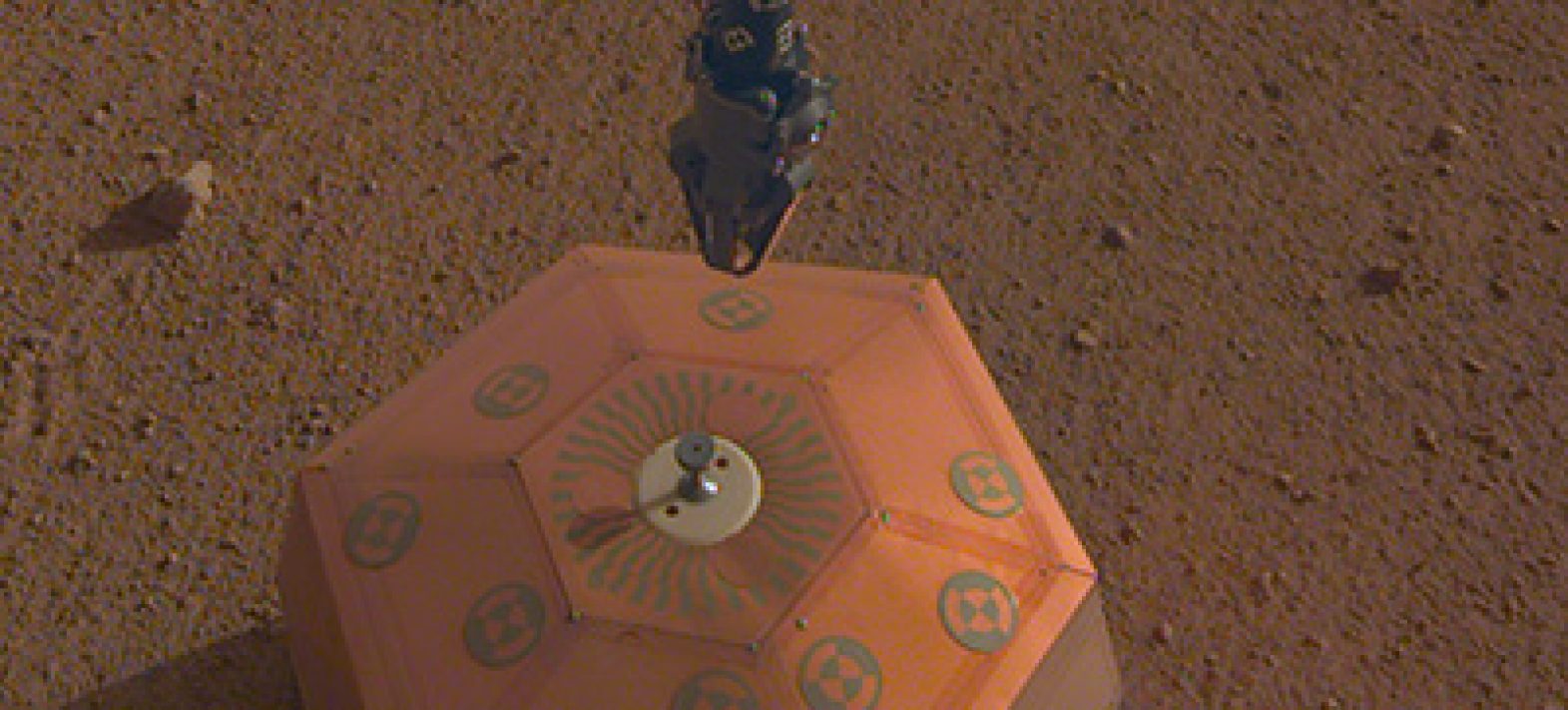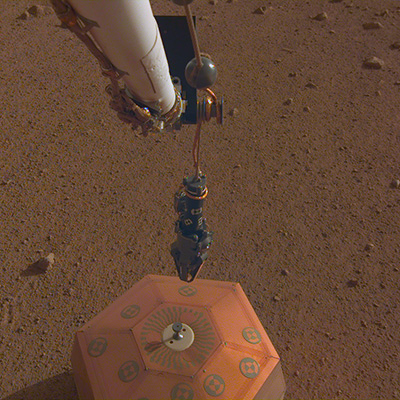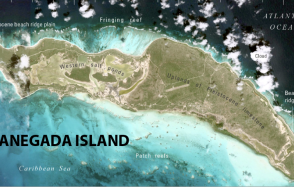The SEIS seismometer has now landed on Mars
NASA has just successfully landed the InSight probe's SEIS seismometer on Mars. This is the first time in the history of the conquest of space that an instrument has been deployed by a robotic arm on the surface of another planet. The success of this critical stage in the mission is the result of years of incessant technical effort by American, French and European teams.

Publication date: 19/12/2018
General public, Observatories, Press, Research
Related observatories : InSight Observatory
Related themes : Earth and Planetary Interiors









